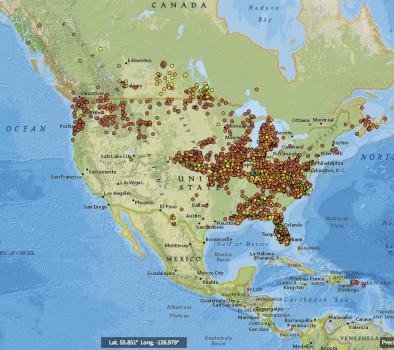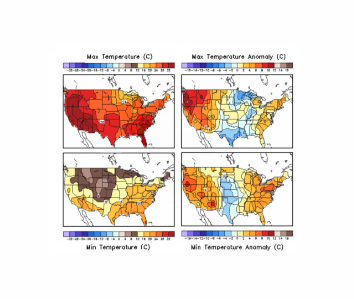Contiguous U.S. had its warmest May on record

May 2018
The average May temperature across the contiguous U.S. was 65.4 degrees F, 5.2 degrees above average, making it the warmest May in the 124-year record, according to scientists at NOAA’s National Centers for Environmental Information. This surpassed the previous record of 64.7°F set in 1934, during the dust bowl era. There were more than 8,590 daily warm station records broken, or tied, in May.
The average precipitation for May was 2.97 inches (0.06 inch above average), which ranked near the middle of the record books. Two weather systems, including Subtropical Storm Alberto, helped bring record and near-record rain across the Southeast and Mid-Atlantic. Meanwhile, more than a quarter of the contiguous U.S. remained in drought.
Year to Date I Meteorological Spring (March – May)
The average U.S. temperature for the year to date (January through May) was 45 degrees F, 1.6 degrees above normal and the 21st warmest on record. The average temperature for the contiguous U.S. during Meteorological Spring (March through May) was 52.4 degrees, 1.5 degrees above average and ranked as the 22nd warmest on record.
Related Content




